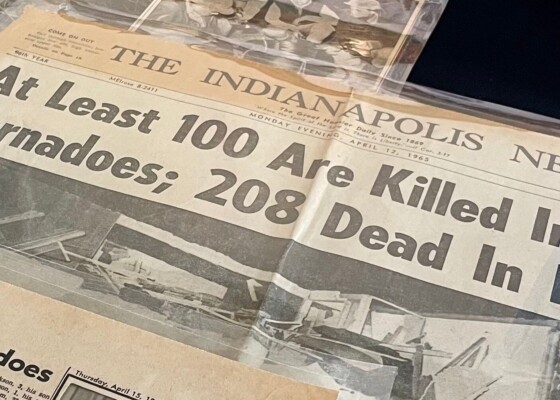Frankenstein Friday: “You Must Create a Female For Me:” Negotiating Rights and Responsibilities in Frankenstein
November 2, 2018One of the more contentious issues in Frankenstein is the creature’s demand that Victor provide him a mate: “You must create a female for me, with whom I can…
One of the more contentious issues in Frankenstein is the creature’s demand that Victor provide him a mate: “You must create a female for me, with whom I can live in the interchange of those sympathies necessary for my being. This you alone can do; and I demand it of you as a right which you must not refuse.”[1] Is having a mate a right? Is it ethical to create a being for that purpose? If so, what are the rights of the mate? These questions are central to Frankenstein, where Mary Shelley explores the responsibilities of creators and their creations. While the answers are debatable, considering Frankenstein in relation to both its literary contexts and modern controversies about relationships can illuminate what is at stake.
The creature, rejected by Victor, develops his expectations of a mate from observation and reading. Watching two of the lovely cottagers, Felix and Safie, he sees the beauty of companionship and love. Yet the creature realizes he differs from the beings around him: “My person was hideous, and my stature gigantic: what did this mean? Who was I? What was I?” (142-43). He finds a parallel for his situation in John Milton’s Paradise Lost, where God creates Adam. “Like Adam, I was created apparently united by no link to any other being in existence” (143). Yet the creature also notes striking differences: whereas he is “hideous,” Adam is “a perfect creature.” Where the creature is abandoned, Adam is “guarded by the especial care of his Creator” (142-43). Above all, the creature is alone, while God gave to Adam a mate. The creature mourns, “no Eve soothed my sorrows, or shared my thoughts; I was alone” (145).
Berated and beaten by everyone he encounters, the creature asserts his rights and Victor’s responsibilities: “Remember, that I am thy creature: I ought to be thy Adam” (119). And just as God gave Adam a mate of the same kind, so the creature demands a female companion, who “must be of the same species, and have the same defects” (155). With such a mate, he could live peacefully: “the love of another will destroy the cause of my crimes.” Without a mate, he has nothing to live for but “hatred and vice” (158). Moved, Victor reflects on what he owes the creature and the damage he could do to society, and “I concluded, that the justice due both to him and my fellow-creatures demanded of me that I should comply with his request” (158-59). Clearly Victor owes something to a being whom he created and abandoned to a life of isolation. But what neither Victor nor the creature acknowledge is that Victor is no God. Shelley’s subtitle for this novel—The Modern Prometheus—suggests he is only the “modern” version of this myth, a man motivated to create due to his ambition rather than concern for his creation, a man of genius but not foresight.
It is this fallibility that makes Victor agree and then second-guess himself as he constructs the creature’s mate. What, he wonders, will happen if he brings her to life? What if the female hates the male creature? What if she refuses to isolate herself with him in the wilds of South America? What if they propagate a race of monsters “who might make the very existence of the species of man a condition precarious and full of terror”? (174). Given these potential consequences, Victor decides he would be selfish to provide the creature a mate to save himself from the creature’s persecutions, so he destroys the female. It is a decision based on projected outcomes, but it misses the extent of the ethical problem. Is it truly just to create someone for the purpose of being a romantic partner to someone else? Is a romantic relationship really a right?
Clearly the creature thinks so, and in this point Shelley’s novel anticipates modern controversies over relationships, most obviously the incel (short for “involuntary celibate”) subculture. This movement surged into the spotlight in 2014, when Elliot Rodger killed six people (women and men) and injured fourteen others in Isla Vista, California, before shooting himself. He left behind a manifesto describing his involuntary celibacy and plot for revenge. He wanted to kill members of the Alpha Phi sorority, the “hottest” girls at his college, “the kind of girls I’ve always desired but was never able to have.” He saw himself as “the true victim” who had “no choice but to exact revenge on the society” that had “denied” him sex and love.[2] Rodger has subsequently become a cult hero in this movement, which has come to be seen as misanthropic and misogynistic, with incels expressing hatred toward sexually active men (“Chads”) and women (“Stacys”). Most recently, in April 2018, Alek Minassian claimed Rodger as inspiration when he drove a rented cargo van into dozens of people, killing ten and injuring sixteen in Toronto. [3] On Facebook, Minassian declared, “The Incel Rebellion has already begun! We will overthrow all the Chads and Stacys!” [4]
This resentment and violence in the incel movement are anticipated in Frankenstein. Before presenting his demands to Victor, the creature kills Victor’s infant brother William (154). He then picks up the necklace William was wearing, and gazes at the portrait of Victor’s mother: “I remembered that I was for ever deprived of the delights that such beautiful creatures could bestow” (155). When he encounters Justine sleeping in the woods, he sees her as “one of those whose smiles are bestowed on all men but me; she shall not escape” (155). He places the portrait in the folds of Justine’s dress, thereby framing her for the murder of William, for which she is executed. The creature is temporarily placated by Victor’s promise to create a mate, but when he sees Victor destroys the female, he vows revenge: “I shall be with you on your wedding-night” (176). Victor, typically self-absorbed, assumes the creature means to kill him, but of course the creature murders Victor’s bride, Elizabeth. If he cannot have a mate, he will destroy all beautiful men and women who can. Clearly there is a parallel in the expectations of the creature and modern incels like Elliot Rodger.
There are also parallels in the origins of the creature and radical incels. Victor dreamed of distinguishing himself through scientific innovations, and consequently isolated himself to pursue his experiments. Once he achieved his goal, he was horrified and abandoned the creature—only to discover its power and vengeful nature years later. What had begun as a project of creation ended in the destruction of multiple lives. Likewise, the origins of the incel subculture were benign. It started in the 1990s with a woman known only as Alana. She created a website, “Alana’s Involuntary Celibacy Project,” with the goal of providing a forum for people to share their frustration: “There were so many ways for people to end up lonely—from awkwardness to mental illness to an overinvestment in the ‘normal.'” She then turned the site over to someone else, and decades later discovered how her purpose had gone astray, resulting in an online culture of misogynistic men who occasionally become violent. “Like a scientist who invented something that ended up being a weapon of war, I can’t uninvent this word, nor restrict it to the nicer people who need it,” she said.[5]
Our choices have consequences not only for ourselves but for others. Our rights entail responsibilities and the recognition of others’ rights. Shelley’s novel, first published two hundred years ago, continues to teach us these lessons, fulfilling the mission she set in the preface to her 1831 edition: “And now, once again, I bid my hideous progeny go forth and prosper.”
Dr. Caroline Breashears is Professor of English at St. Lawrence University, where she specializes in eighteenth-century British Literature. This fall she has been a visiting fellow at The Liberty Fund, based in Indianapolis. This past summer, she organized a Liberty Fund conference, “Liberty and Responsibility in Mary Shelley’s Frankenstein.”
[1] Mary Shelley, Frankenstein; or, The Modern Prometheus, 1818, edited by D. L. Macdonald and Kathleen Scherf, 3rd ed., Peterborough: Broadview, 2012, page 156. Further references are included parenthetically in the text.
[2] Elliot Rodger: How Misogynist Killer became ‘Incel Hero’, BBC News, 26 April 2018, www.bbc.com/news/world-us-canada.
[3] Betsy Powell, “Accused in Toronto Van Attack Could Go to Trial Next Year,” The Star, 14 Sept. 2018, online edition.
[4] Rob Crilly, Christopher Guly, Mark Molloy, “What Do We Know about Alek Mianssian, Arrested after Toronto Van Attack?” The Telegraph, 25 Apr. 2018, telegraph.co.uk.
[5] Peter Baker, “The Woman Who Accidentally Started the Incel Movement,” Elle, 1 March 2016, online edition.


